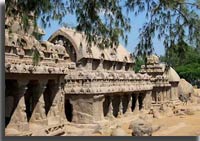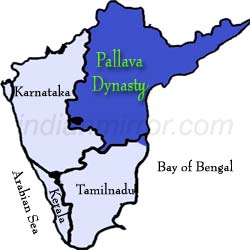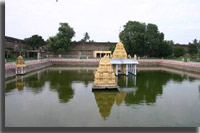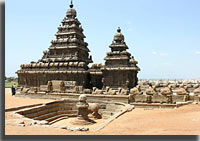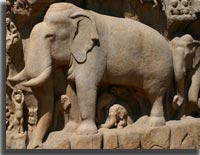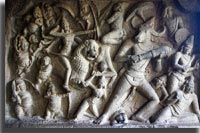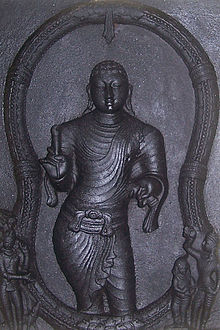Dear Vanniya Sonthangale!!!
Saturday, 23 February 2013
Chola Dynasty - Vanniyarkale
Dear VanniyaSonthangale!!!
The Following is the great history about cholas (Vanniyas).
The CholaKingdom is very ancient, there has been references made in Mahabharatha and even in Ashokan inscriptions. It is known that Karikala was the Chola ruler who reigned in the 2nd century AD. During Karikala's reign, the capital city was moved to Kaveripattanam from Uraiyur. Nedumudikilli seems to have been the successor of Karikala, whose capital town was set to fire by the sea pirates. The frequent attacks of Pallavas, Cheras and Pandyas declined the Chola power and it was in the 8th century AD, Cholas glory began to shine when the Pallavas power declined.
Vijayalaya: In around 850 AD, Vijayalaya founded the dynasty probably by starting off as a vassal of the Pallava king. With the conflict between Pallavas and Pandyas, Vijayalaya occupied Tanjore and made his capital. He was succeeded by his son Aditya-I. Aditya-I defeated Pallava king Aparajita and also Parantaka Viranarayana, the Kongu ruler.
Aditya-I: Aditya-I was soon succeeded by his son Parantaka-I and ruled between 907 to 955 AD. Cholas power reached supremacy under his reign. He annexed territory of Pandya King and soon conquered the Vadumbas. He swept away all the traces of Pallavas power, but received a set back at the hands of Rashtrakutas.
Raja Raja Chola:


The powerful ruler of the Chola kingdom was Raja Raja - the Great. He ruled from 985 - 1014 AD. His army conquered Venginadu, Gangapadi, Tadigaipadi, Nolambavadi, Kudamalai-nadu, Kollam, Kalingam, Ilamandalam of the Singalas. His first triumph was achieved early in his reign by destroying the Navy of Cheras at Trivendrum. He annexed north part of Ceylon to his kingdom and sacked Anuradhapuram. Polonnaruva was made his capital of the Chola province of Ceylon. Political divisions of the Western Ganga's Gangavadi, Tadigaivadi and Nolambavadi were conquered in 991 AD and it remained under them for the next century. Union of Eastern and Western Chalukyas was stopped by helping Eastern Chalukya ruler . Towards the end of the reign, the Cholas was attacked by the Western Chalukyas, but
Raja-raja Chola won the war.
Rajendra-I:

Rajendra-I founded his new capital at Gangaikonda Cholapuram. He set up Vaishnava centre and the Vedic college for teaching Vedas. He had a friendly relationship with the China emperor, and had a peaceful reign of 32 years. He extended the territory inherited from his father, and subdued the power of Pandyas and Keralas. He performed Asvamedha sacrifice too. He was very successful in the beginning but later on he lost his life in the famous battle of Koppam on the Tungabhadra. The next ruler Rajendra-II (1052-1064 AD) just managed to maintain the Chola empire though he had to struggle with the troubling Chalukyas.
Vira Rajendra: Vira Rajendra (1064 - 1070 AD) was the elder brother of Rajendra-II. He succeeded his brother to reign for the next seven years. He met the invasion of Chalukya King and defeated the Chalukya ruler. He reconquered Vengi and foiled the efforts of Vijayabahu of Ceylon who was trying to drive the Cholas out of Ceylon. When Someswara-II succeeded the Chalukyas throne, Rajendra made some incursions but later on built a friendly ties by giving his daughter to Vikramaditya. Soon after the death of Vira Rajendra in 1070 AD, there was a contest for the throne and Adhi-Rajendra, the heir apparent took the throne. He had a short uneventful reign, Vijayabahu assumed independence in Ceylon.
Kulottunga - I: Rajendra-II succeeded Adhirajendra under the title Kulottunga Chola. In about 1073, Kalachuri King Yasahkarana invaded Vengi but did not gain anything. Pandyas and Chera's attack were put down by Kulottunga. The southern Kalinga revolt were put down too. In about 1118 AD, the Viceroy of Vengi - the Vikramaditya VI took control of Vengi from Chola and thus succeeded in separating the Cholas from the Eastern Chalukyas. Gangavadi and Nolambavadi were lost to Hoysala's Vishnuvardhana.
Vikrama Chola (1120 - 1135 AD): The next successor, the son of Kulottunga-I restored the Chola power by reconquering Vengi and by taking control of part of Gangavadi. His reign was somewhat peaceful to his subjects though there were floods and famines in the South Arcot. The Hoysala expansion took control of Chola power slowly and subsequently. The last rulers namely Kulottunga - II, Rajaraja - II, Rajadhiraja - III could not stop the Hoysalas annexation of Chola Kingdom. Cholas hold on Pandyan kingdom had already weakened. In about 1243, the Pallava chief declared independence. The Kakatiyas and Hoysalas partitioned among themselves the territory of the Chola empire and Chola empire ceased to exist for ever.
Chola-Dynasty
The Following is the great history about cholas (Vanniyas).
The CholaKingdom is very ancient, there has been references made in Mahabharatha and even in Ashokan inscriptions. It is known that Karikala was the Chola ruler who reigned in the 2nd century AD. During Karikala's reign, the capital city was moved to Kaveripattanam from Uraiyur. Nedumudikilli seems to have been the successor of Karikala, whose capital town was set to fire by the sea pirates. The frequent attacks of Pallavas, Cheras and Pandyas declined the Chola power and it was in the 8th century AD, Cholas glory began to shine when the Pallavas power declined.
Vijayalaya: In around 850 AD, Vijayalaya founded the dynasty probably by starting off as a vassal of the Pallava king. With the conflict between Pallavas and Pandyas, Vijayalaya occupied Tanjore and made his capital. He was succeeded by his son Aditya-I. Aditya-I defeated Pallava king Aparajita and also Parantaka Viranarayana, the Kongu ruler.
Aditya-I: Aditya-I was soon succeeded by his son Parantaka-I and ruled between 907 to 955 AD. Cholas power reached supremacy under his reign. He annexed territory of Pandya King and soon conquered the Vadumbas. He swept away all the traces of Pallavas power, but received a set back at the hands of Rashtrakutas.
Raja Raja Chola:

The powerful ruler of the Chola kingdom was Raja Raja - the Great. He ruled from 985 - 1014 AD. His army conquered Venginadu, Gangapadi, Tadigaipadi, Nolambavadi, Kudamalai-nadu, Kollam, Kalingam, Ilamandalam of the Singalas. His first triumph was achieved early in his reign by destroying the Navy of Cheras at Trivendrum. He annexed north part of Ceylon to his kingdom and sacked Anuradhapuram. Polonnaruva was made his capital of the Chola province of Ceylon. Political divisions of the Western Ganga's Gangavadi, Tadigaivadi and Nolambavadi were conquered in 991 AD and it remained under them for the next century. Union of Eastern and Western Chalukyas was stopped by helping Eastern Chalukya ruler . Towards the end of the reign, the Cholas was attacked by the Western Chalukyas, but
Raja-raja Chola won the war.
Rajendra-I:

Rajendra-I founded his new capital at Gangaikonda Cholapuram. He set up Vaishnava centre and the Vedic college for teaching Vedas. He had a friendly relationship with the China emperor, and had a peaceful reign of 32 years. He extended the territory inherited from his father, and subdued the power of Pandyas and Keralas. He performed Asvamedha sacrifice too. He was very successful in the beginning but later on he lost his life in the famous battle of Koppam on the Tungabhadra. The next ruler Rajendra-II (1052-1064 AD) just managed to maintain the Chola empire though he had to struggle with the troubling Chalukyas.
Vira Rajendra: Vira Rajendra (1064 - 1070 AD) was the elder brother of Rajendra-II. He succeeded his brother to reign for the next seven years. He met the invasion of Chalukya King and defeated the Chalukya ruler. He reconquered Vengi and foiled the efforts of Vijayabahu of Ceylon who was trying to drive the Cholas out of Ceylon. When Someswara-II succeeded the Chalukyas throne, Rajendra made some incursions but later on built a friendly ties by giving his daughter to Vikramaditya. Soon after the death of Vira Rajendra in 1070 AD, there was a contest for the throne and Adhi-Rajendra, the heir apparent took the throne. He had a short uneventful reign, Vijayabahu assumed independence in Ceylon.
Kulottunga - I: Rajendra-II succeeded Adhirajendra under the title Kulottunga Chola. In about 1073, Kalachuri King Yasahkarana invaded Vengi but did not gain anything. Pandyas and Chera's attack were put down by Kulottunga. The southern Kalinga revolt were put down too. In about 1118 AD, the Viceroy of Vengi - the Vikramaditya VI took control of Vengi from Chola and thus succeeded in separating the Cholas from the Eastern Chalukyas. Gangavadi and Nolambavadi were lost to Hoysala's Vishnuvardhana.
Vikrama Chola (1120 - 1135 AD): The next successor, the son of Kulottunga-I restored the Chola power by reconquering Vengi and by taking control of part of Gangavadi. His reign was somewhat peaceful to his subjects though there were floods and famines in the South Arcot. The Hoysala expansion took control of Chola power slowly and subsequently. The last rulers namely Kulottunga - II, Rajaraja - II, Rajadhiraja - III could not stop the Hoysalas annexation of Chola Kingdom. Cholas hold on Pandyan kingdom had already weakened. In about 1243, the Pallava chief declared independence. The Kakatiyas and Hoysalas partitioned among themselves the territory of the Chola empire and Chola empire ceased to exist for ever.
Chera Dynasty - Vanniyarkale
Dear Vanniya Sonthangale!!
We only started to rule this entire india and some foreign countries also, as a
1.Cheran
2.Cholan and
3.Pallava's
Vnniya Chera Kings
The Sangam work, Purananuru has a reference to Uthiyan Cheralathan, which is widely misinterpreted as he feeding the two rival armies of the Mahabharata war. The event, however, is possibly related to the Chera war with the Satavahanas, and hence the period of Uthiyan Cheralathan could be assigned in the 2nd century BC.[16]
.King Nedum Cheralathan
Palyani Sel Kelu Kuttuvan
We only started to rule this entire india and some foreign countries also, as a
1.Cheran
2.Cholan and
3.Pallava's
Vnniya Chera Kings
Origin
It is possible that the Cheras reigned an independent kingdom in the 4th century BC.[16] Along with the Pandyas, Cholas and Satyaputras, Cheras ("Keralaputras") in the late megalithic phase are also mentioned in the inscriptions of third century BC Maurya Emperor Asoka. According Asoka inscriptions, the Cheras lived on the borders of the Maurya empire.[3] An expression in the ancient Tamil grammar work, Tolkappiyam, suggests that the Cheras were the 1st to establish the kingdom compared to Pandyas and Cholas.[16] However, the Chera Kingdom possibly rose to prominence on the fall of Pandya sovereignty.[29]Rulers
In early Tamil literature the Chera rulers are referred to as Cheral, Kuttuvan, Irumporai, Kollipurai or Athan. Chera rulers were also called Kothai or Makothai. The nobility among the Cheras were called "Cheraman" in general.King Uthiyan Cheralathan (2nd century BC)
Main article: Uthiyan Cheralathan
The first of the known rulers of the Chera kingdom was "Vanavaramban"
Perumchottu Uthiyan Cheralathan. He had his capital at a place called
Kuzhumur in Kuttanad. He expanded the kingdom northward and eastward
from their original home in Kuttanad. Uthiyan Cheralathan was a
contemporary of the Chola ruler Karikala Chola.
Mamulanar credits him with having conducted a feast in honour of his
ancestors. In a battle at Venni, Uthiyan Cheralathan was wounded on the
back by Karikala Chola (Pattinappalai ). Unable to bear the disgrace, the Chera committed suicide by starvation.[31] His queen was Veliyan Nallini.[citation needed]The Sangam work, Purananuru has a reference to Uthiyan Cheralathan, which is widely misinterpreted as he feeding the two rival armies of the Mahabharata war. The event, however, is possibly related to the Chera war with the Satavahanas, and hence the period of Uthiyan Cheralathan could be assigned in the 2nd century BC.[16]
.King Nedum Cheralathan
Palyani Sel Kelu Kuttuvan
Narmudi Cheral
King Selva Kadumko Valiathan
King Vel Kelu Kuttuvan (Senguttuvan)
Palyani Sel Kelu Kuttuvan
Adu Kottu Pattu Cheralathan
Perum Cheral Irumporai
King Illam Cheral Irumporai
King Yanaikatchai Mantaran Cheral Irumporai
Kanaikkal Irumporai
so on....
Origin As a God
Doctor Ayya Vazhga! Doctor Chinna Ayya Vazhga!! Maveerna Guru Vazhga !!!
The name Vanniyar is derived from the Tamil word 'Vanmai' which means valor. Agni,the God of Fire is connected with Regal office,as kings hold in their hands the fire wheel or Agneya chakra. The Vanniyars of South India considered as a representative of the Non-Aryan,a Dravidian Rajput Element. In Andhra Pradesh and Karnataka Vanniars while referring their caste in circumstances and rituals, subtitle with the phrase 'Agnivanshi' denoting their clan.
At Sirkazhi Vaideeswaran Temple Inscriptions about Vanniyar Puranam are seen. It denotes that,at ancient times there is two asuras known as Vatapi and Mahi, worshipped Brahma and obtained immunity from Death and subsequently they garrisoned the Earth. Jambuva Mahamuni,performed a Yagam,or sacrifice by power.soon Armed Horse men sprung from the flames,undertook twelve expeditions against them and destroyed them. Their leader then assumed the government of the country under the name Rudra Vanniya Maharaja,who had five sons,the Ancestors of Vanniya Caste. This Tradition alludes to the destruction of the city of Vatapi by Narasimhavarman,the king of Pallis or Pallavas.
In the Classical tamil poem Kalladam,which has been attributed to the time of Thiruvalluvar,the author of the sacred Kural,Vanni is used in the sense of King. Kamban, the author of Tamil Ramayana,uses it in a similar sense.
The vanniyans of agnikula race, can be classified as
The name Vanniyar is derived from the Tamil word 'Vanmai' which means valor. Agni,the God of Fire is connected with Regal office,as kings hold in their hands the fire wheel or Agneya chakra. The Vanniyars of South India considered as a representative of the Non-Aryan,a Dravidian Rajput Element. In Andhra Pradesh and Karnataka Vanniars while referring their caste in circumstances and rituals, subtitle with the phrase 'Agnivanshi' denoting their clan.
At Sirkazhi Vaideeswaran Temple Inscriptions about Vanniyar Puranam are seen. It denotes that,at ancient times there is two asuras known as Vatapi and Mahi, worshipped Brahma and obtained immunity from Death and subsequently they garrisoned the Earth. Jambuva Mahamuni,performed a Yagam,or sacrifice by power.soon Armed Horse men sprung from the flames,undertook twelve expeditions against them and destroyed them. Their leader then assumed the government of the country under the name Rudra Vanniya Maharaja,who had five sons,the Ancestors of Vanniya Caste. This Tradition alludes to the destruction of the city of Vatapi by Narasimhavarman,the king of Pallis or Pallavas.
In the Classical tamil poem Kalladam,which has been attributed to the time of Thiruvalluvar,the author of the sacred Kural,Vanni is used in the sense of King. Kamban, the author of Tamil Ramayana,uses it in a similar sense.
The vanniyans of agnikula race, can be classified as
Ruthra Vanniyar,
Agni
Vanniyar,
Sambu vanniyar,
Brahma vanniyar, and
Indra Vanniyar.
Vanniyan born to destroy the immorals,immoral activities and immoral activists.we are created by Lord Shiva,adopted by Devendran and related with Murugan and Ganesan(Piilaiyar).
so We have nice Origin and histroy,As a vanniyar you all should proud to say
"VANNIYAR".
Think Reality,
Like Originality,
Live without poverty.
VanniyarVaralaru
Dear Vanniya Sonthangale!!!
I am Shiva Started this blog to explain our valuable history and hero's also to integrate the outstanding power of vanniya 's together ,yes wecan together and create our old history again.
whom we are....
1.God
2.Agni putirargal
3.Kings
4.Phalanthraphist(vallalkal)
5.Scholars
6.Ministers
7.Soldiers
8.Freedom Fighters
and so on....
I am Shiva Started this blog to explain our valuable history and hero's also to integrate the outstanding power of vanniya 's together ,yes wecan together and create our old history again.
whom we are....
1.God
2.Agni putirargal
3.Kings
4.Phalanthraphist(vallalkal)
5.Scholars
6.Ministers
7.Soldiers
8.Freedom Fighters
and so on....
Subscribe to:
Posts (Atom)

